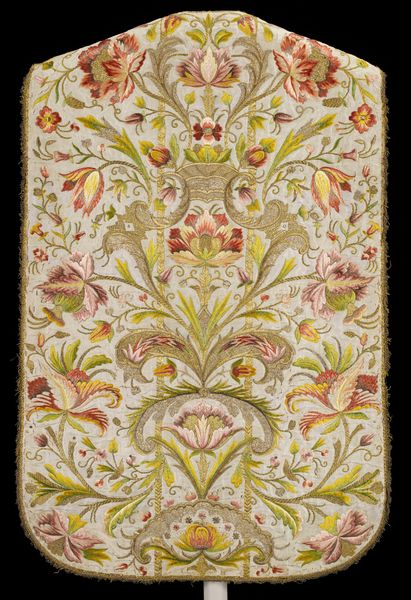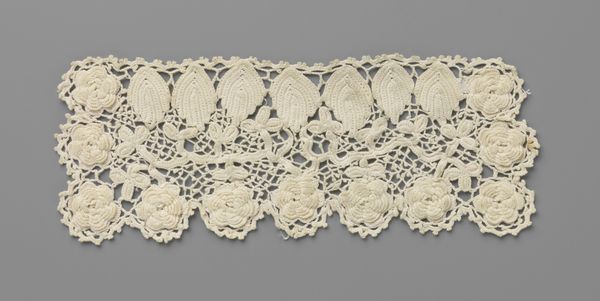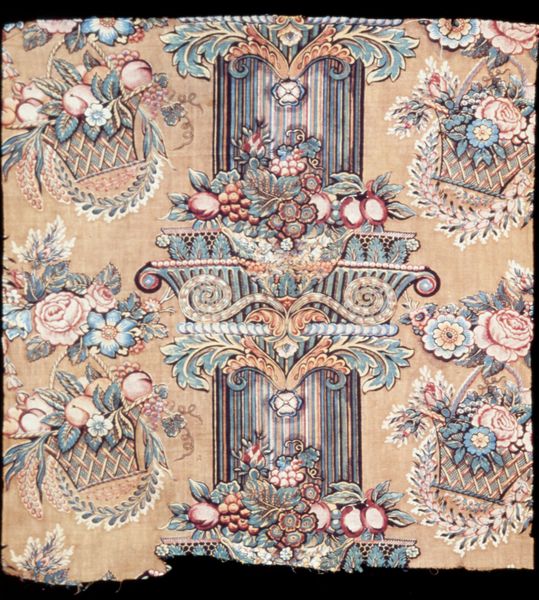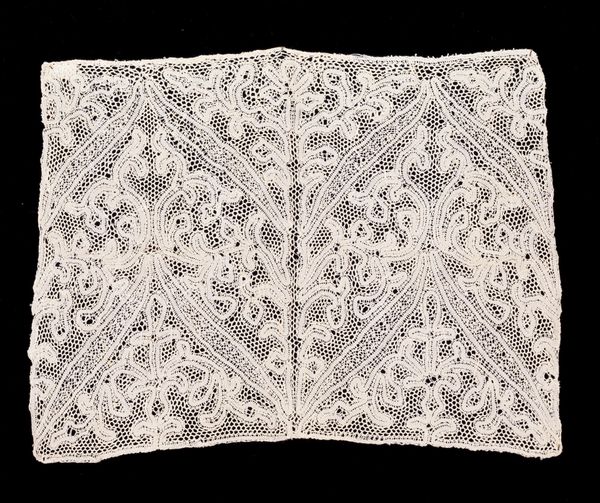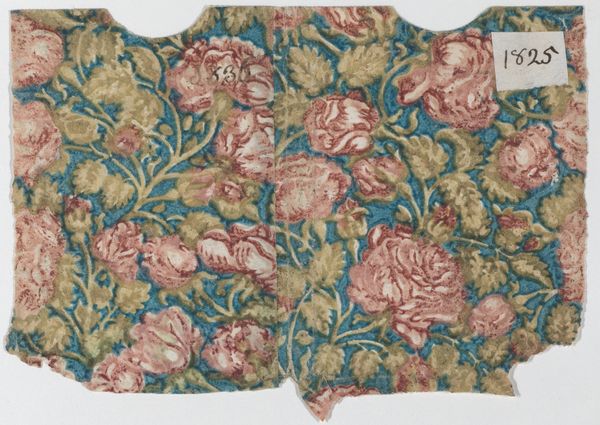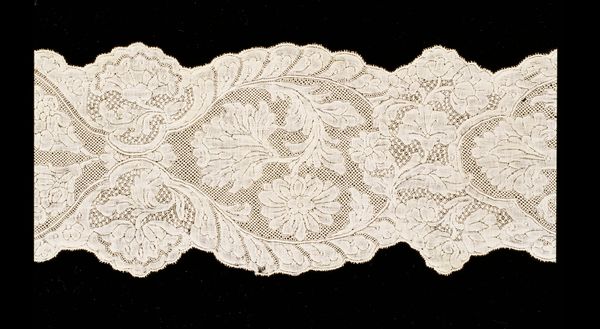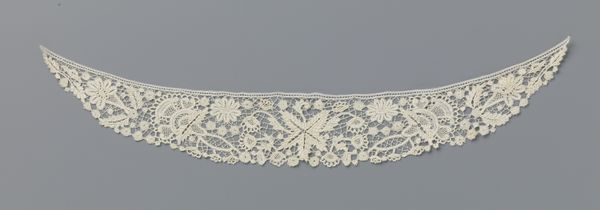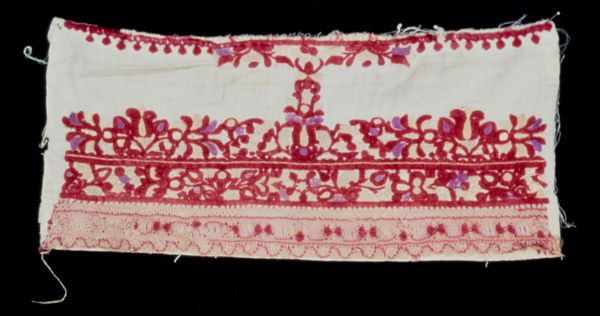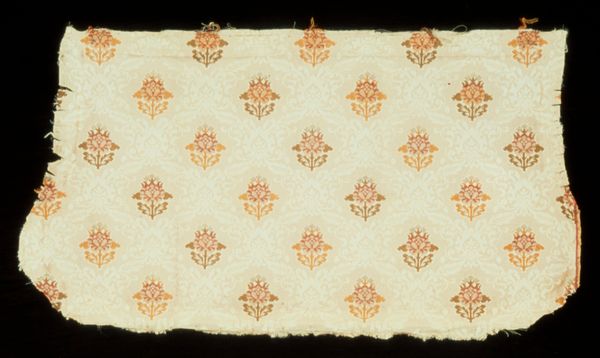
Dimensions: 15 1/2 x 17 1/2 in. (39.37 x 44.45 cm)
Copyright: Public Domain
Editor: Here we have "Fragment," a textile piece from the 19th century, held here at the Minneapolis Institute of Art. It appears to be silk, decorated with a repeating floral pattern. What strikes me is how incomplete it feels. It makes me wonder about its previous life. What do you see in this fragment? Curator: Well, focusing on its materiality, think about the labor involved in producing this silk. Not just the raising of silkworms, but the weaving itself – a craft often relegated to the domestic sphere, and historically, women. Does knowing that alter your view of this fragment? Editor: Absolutely! I was focused on the aesthetic design, but knowing the process…it speaks of hours of skilled handwork, perhaps a collaborative effort, bound by material conditions. I wonder, was this type of textile widely accessible? Curator: That's key. The extravagance of the pattern, coupled with the luxurious silk, likely places this within a sphere of elite consumption. The very existence of "decorative arts" depended on surplus labor and wealth. Were these materials produced locally or internationally? Thinking about such processes and trades shifts its understanding. Editor: So, instead of just appreciating the design, we should also consider the social and economic systems that allowed its creation. I guess that reframes what art can even mean, pushing us to consider its full provenance. Curator: Exactly. And questioning who profited from the textile's production, who designed the pattern, who wore the garment it adorned - if, indeed, it was for apparel. Material tells the tale if we’re listening. Editor: It’s fascinating to think about it that way. I never would have considered the economic ramifications so explicitly when looking at something like textile. Now, it feels almost radical to look beyond just the surface. Curator: It's not just about admiring, but understanding. It shows textiles can reveal complex networks of labor and privilege woven together in these patterns.
Comments
No comments
Be the first to comment and join the conversation on the ultimate creative platform.


